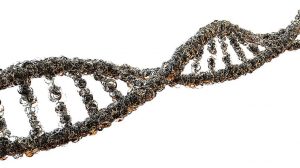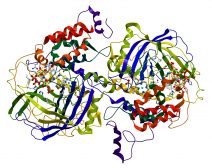Definition
noun, plural: bradyzoites
A slowly multiplying cell form in the life cycle of certain Apicomplexans, such as Toxoplasma gondii
Supplement
Apicomplexa is a phylum comprised of protozoans characterized by having a special organelle called an apical complex, and most of them are single-celled, parasitic, and spore-forming. They are intracellular parasites. Their life cycle is comprised of stages where each has a particular cellular variety. Nevertheless, not all members have all the various life stages.
Taking for instance the life cycle of Toxoplasma gondii (causative agent of toxoplasmosis), the various cell types in the life cycle of this species includes bradyzoites, tachyzoites, and oocysts. A bradyzoite is a sessile, slow-growing cell type. In latent toxoplasmosis, the bradyzoites form clusters within a cyst (pseudocyst) lodged in muscle and brain tissues of the host. The bradyzoites may give rise to either tachyzoites or gametocytes. Gametocytes, gamete-forming cells, may either be male or female. The male gametocyte differentiates into a microgamete that is flagellated and smaller. The female gametocyte becomes a macrogamete that is non-flagellated and larger in size than the male gametocyte. The male and the female gametocytes fuse forming a zygote inside the oocyst. The oocyst, therefore, contains the zygote. Under appropriate conditions, the zygote develops within the oocyst, which then becomes infective. Ingestion of the infective oocyst by the host could lead to toxoplasmosis. Within the host, the oocyst liberates bradyzoites in the stomach and intestine of the host and the parasite’s life cycle goes on again.
Word origin: brady– + Greek zōē (life)
See also:
Dictionary > Bradyzoite
You will also like...

Running Water Freshwater Communities
This tutorial introduces flowing water communities, which bring new and dithering factors into the equation for possible..

Genetic Mutations
This tutorial looks at the mutation at the gene level and the harm it may bring. Learn about single nucleotide polymorph..

Selective Breeding
Gregor Mendel's studies into Monohybrid and Dihybrid crossing and Charles Darwin's study of evolution and natural select..

Protein Activity and Cellular Metabolism
Proteins have a crucial role in various biological activities. Get to know how proteins are able to perform as enzymes, ..

The Evolution of Cell Organelles
The nucleus containing the genetic material, DNA, and the mitochondria, well-identified as the "powerhouse of the cell",..

Freshwater Communities & Lentic Waters
Lentic or still water communities can vary greatly in appearance -- from a small temporary puddle to a large lake. The s..

